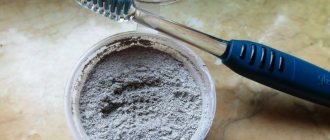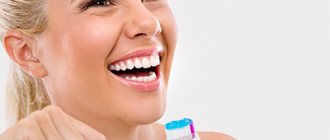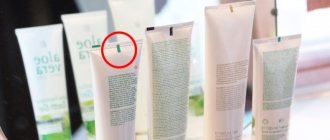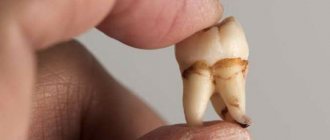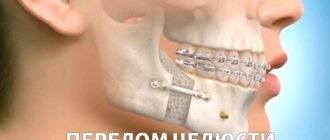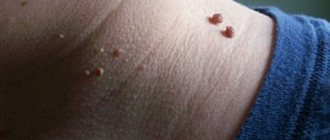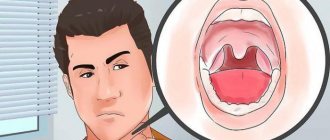An allergy is a hypertrophied immune response of the body to external and internal stimuli. Allergens can include food, dust, animal hair, cosmetics, household chemicals, medications, etc. Allergy to toothpaste is a common phenomenon that many people encounter every day.
It is noteworthy that signs of an immune reaction to a given product are not always localized directly in the mouth area. Thus, characteristic rashes can appear on the skin of the face and neck, mucous membranes; in severe cases, the consequences of the body’s immune response to toothpaste can even affect the functioning of internal organs.
Signs of a toothpaste allergy
- Contact dermatitis. An allergy to toothpaste can manifest itself as rashes in the corners of the mouth and around the lips. If treatment is not started, the disease spreads to other parts of the body.
- Dermatitis on the eyelids. Itching occurs, reddish pimples may appear in the form of acne. This is how the body reacts to fluorides in toothpaste. The rash spreads evenly to the patient’s lips, cheeks, chin and nose.
- Wounds, ulcers. They develop on the oral mucosa and gums. Open wounds cause great discomfort and pain after brushing teeth with toothpaste, eating, or swallowing saliva.
- Cheilitis. It is the most basic symptom of an allergic inflammatory process from toothpaste. Cheilitis is characterized by irritation, dryness and cracking; in advanced conditions, symptoms develop into swelling and purulent discharge.
- Stomach upset . When brushing your teeth, some of the toothpaste enters the gastrointestinal tract. If there is an allergy, the internal organs also begin to react to the disease. From the gastrointestinal tract - this is pain, flatulence, all kinds of disorders.
Other signs when allergy sufferers use toothpaste
- Having difficulty breathing;
- Hives;
- Conjunctivitis;
- Anaphylactic shock;
- Inflammatory process in the gums.
Toothpaste ingredients that cause allergies
Allergic reactions to toothpaste occur mainly due to the body's failure to accept one of the ingredients in the toothpaste. But pain, irritation, etc. can also appear as a result of natural additives, for example, mint.
In addition to the fluoride element, the following substances can stimulate allergies:
- Essential oils, parabens and papain;
- Cocamidopropyl betaine;
- Propylene glycol;
- Sodium benzoate.
Allergies to other foods
If you are prone to allergies to toothpaste, there will be no exception to the tendency to allergic reactions to toothpastes with flavors, mouthwashes, and chewing gum.
Therefore, it is very important to identify which substance in the toothpaste causes an allergic reaction. An allergen can only be identified using special skin tests and allergy tests in a clinic setting.
What substances in the composition can cause allergies?
If a person begins to notice that during or after brushing his teeth, he develops alarming symptoms (including reactions that occur within 10-30 minutes after brushing his teeth), which may be signs of an allergy, it is necessary to analyze the composition of the toothpaste used and try to find out what it was the substance in the composition that could provoke the body’s immune response.
The most common pathogens that most often cause irritation and allergic reactions are listed in the table below.
Table. The most common allergens in toothpastes.
| Substance | How does it work? |
| This is an additive of the surfactant category (surfactants), which the manufacturer uses so that the paste or gel can foam. Numerous studies have confirmed that the constant use of pastes containing sodium lauryl sulfate increases the risk of chronic aphthous (ulcerative) stomatitis and leads to the development of xerostomia (reduced saliva production). These phenomena can be perceived as manifestations of allergies, and their elimination requires complex treatment of the oral cavity, including correction of local immunity. | |
| Although sodium alginate (a salt of alginic acid) is a legal food additive, it may cause allergic reactions in approximately 0.9% of people when used topically and ingested. According to its properties, sodium alginate is a thickener, therefore, when identifying immunopathological reactions to alginic acid derivatives, you should choose toothpastes with other binders (pectin, agar-agar, glycerin). | |
| Sodium bicarbonate is baking soda that is added to toothpastes to enhance the anti-inflammatory effect. Sodium bicarbonate itself is not an allergen, but with frequent use of pastes with the addition of carbonic acid salts, it is possible to disrupt the microflora in the oral cavity and increase the sensitivity of the mucous membranes to other substances (manifested by a burning sensation, tingling, and the formation of microcracks after brushing teeth). | |
| These are the most common and strong allergens, found everywhere not only in cosmetics, household chemicals and medications, but also in food products. In the production of toothpastes, only approved flavoring and coloring additives are used, but in people with a tendency to allergies and increased sensitivity of the oral cavity, they can cause severe irritation. | |
| Ureas provide a therapeutic and prophylactic effect due to a moderate bactericidal and weak anti-inflammatory effect. In industry, urea is used as a fertilizer, as well as in the production of furniture and medicines (cytostatics). An allergy to toothpastes with the addition of urea may occur if used for too long, so it is recommended to periodically change dental hygiene products. | |
| Bee products are one of the most common additives that have anti-inflammatory, soothing and bactericidal effects. Honey is included in the group of highly allergenic products, therefore, in people with a low immunological status, products with the addition of propolis and other bee products, toothpastes with this component can cause severe allergies. | |
| Essential oils are a natural product that is added to tooth powders and pastes to provide a therapeutic and prophylactic effect or to give the product a characteristic taste and smell. The most powerful allergens are eucalyptus oil and fir oil; bergamot, rose and tea tree oils cause irritation less often. | |
| Mint pastes are a classic type of hygienic toothpastes, but using them for a long time is not recommended due to their high menthol content. This component has fairly high allergenic properties and can cause allergic reactions of varying degrees in predisposed people. |
Treatment of allergies to toothpaste
It is very important not to ignore the manifestations of negative consequences that appear after brushing your teeth with toothpaste, especially if they began to manifest themselves early. If you notice symptoms of an allergy, you should immediately consult a doctor in order to make a correct diagnosis and begin proper treatment of the allergy.
Methods to prevent toothpaste allergies:
- After introducing toothpaste, you need to carefully rinse your mouth and face, especially in the corners of the mouth.
- Buy a toothpaste that has as few ingredients as possible, or a hypoallergenic toothpaste.
- Avoid introducing products that contain fluoride. Also, do not drink fluoridated water.
- Avoid applying too much toothpaste to your brush to reduce exposure to allergens.
- Try not to swallow the dentifrice.
- You should not give preference to toothpastes with natural ingredients. They may contain rare mixtures of herbs, which can be powerful allergens.
Irritations that are not related to toothpaste allergies
With severe sensitivity of the mouth, after brushing the teeth, symptoms identical to an allergic reaction may appear.
If you often change toothpastes, and the inflammatory process still occurs, your face will show all signs of irritation that are not related to allergies.
In such cases, dentists recommend using certain brands of toothpastes with a minimum content of flavoring additives and oils.
For people with sensitive teeth and gums, it is recommended to use the following brands: Sensodyne, Oral-B, Sensitive Advantage. Also, do not press the brush too hard on your teeth. Buy a toothbrush with medium-spectrum soft bristles.
Toothpaste allergy medications
The pharmacological industry currently produces a fairly extensive list of drugs that are available without prescriptions, but they should only be used after a visit to the doctor.
The most effective remedies for toothpaste allergies include:
- Enterosorbents;
- Telfast;
- Diazolin;
- Claritin;
- Diphenhydramine;
- Tavegil and many others.
They are produced in the form of: tablets, sprays, aerosols, drops (eye and oral) and syrups.
allerganesth.org
Burning mouth syndrome
Burning mouth syndrome, or BMS, can affect different parts of the mouth, such as the gums, palate or tongue, as well as the lining of the cheeks and the back of the throat. Experts note that the symptoms of this condition can be either transient or permanent. Patients with GIPR experience a burning or tingling sensation, extreme thirst, or dry mouth. In some people, CVD is accompanied by loss of taste or the appearance of a metallic taste in the mouth.
Often the exact cause of CVD is difficult to determine. This condition may be associated with other health problems, such as nutrient and vitamin deficiencies, hormonal changes (particularly in menopausal women), endocrine disorders, certain medications, or oral fungal infections. Brushing your tongue or gums too vigorously—especially if you use a stiff-bristled brush—and using abrasive toothpaste or alcohol-based mouthwash can cause an unpleasant burning sensation in your mouth. CVD may also be associated with stress.
Solution
How to cope with the consequences of the body's allergic response to toothpaste: the best thing is to seek help from a dentist, who will determine the allergen that caused the reaction and select the correct complex therapy. Usually, to combat the consequences of allergies, drugs are used - enterosorbents and, of course, antihistamines (Diazolin, Telfast, Claritin, Diphenhydramine, Tavegil). The dosage and type of medications are selected by the doctor.
Symptomatic therapy for an allergic reaction to toothpaste:
- local anti-inflammatory drugs (ointments, gels, aerosols) - Cholisal, Actovegin, Kamistad-gel.
- Antiseptics for treating mucous membranes (Miramistin).
- Vitamin A, sea buckthorn oil and other agents that accelerate wound healing.
- In cases of severe pain and increased body temperature, patients are prescribed analgesics (Paracetamol, Ibuprofen).
- Vitamin complexes to combat immune dysfunction (Alphabet, Undevit).
Important! To combat local allergy symptoms, it is advisable to use Metrogyl Denta paste, a drug with antiseptic, anti-inflammatory, antihistamine and wound-healing properties. This remedy is applied to wounds (ulcers) on the mucous membrane 2-3 times a day until they completely disappear.
Dentists say that improper use of dental floss and mouth rinses can also lead to rashes, irritation of the mucous membranes and cause inflammation of the gums
For allergy symptoms from the gastrointestinal tract, you can use proven folk recipes:
- pomegranate juice copes well with diarrhea, nausea, abdominal pain and other discomfort in the digestive tract;
- You can make this healthy cocktail at home: 1 tbsp. l. mix tomato juice with 1 tsp. ginger, add ½ tsp. salt and lemon juice. This remedy will help to get rid of allergic manifestations as soon as possible, improve well-being, and restore the functioning of the gastrointestinal tract.
Expert opinion
Roman Borisovich Alekperov
orthopedic dentist
Experience: 24 years
As a rule, an allergic reaction does not always occur immediately after the installation of a crown or prosthesis. It can appear even after several years of use. It happens that when altering old structures with new ones, a reaction such as burning and swelling of the gums occurs. It seems that a person wore metal-ceramic crowns or a prosthesis for many years, got new ones, and six months later severe allergic manifestations began. Of course, to prevent such a development of events, it would be good to check with an allergist before getting prosthetics and take tests for sensitivity to dental materials. And then, new teeth, a new smile will give you pleasure, and not a headache and searching for the cause of poor health all your life. If you have the financial opportunity, it is better to immediately install crowns or prostheses made of zirconium dioxide. Hypoallergenic material. Take care of yourself and be healthy!
How does the disease manifest itself?
An allergy to toothpaste does not necessarily have to manifest itself directly in the mouth; the symptoms of the pathological process can be localized much more widely and spread to the skin, mucous membranes and even the internal organs of a person. Clinical manifestations can develop either instantly or after some time. So, the main symptoms of an allergy to toothpaste include:
- contact dermatitis, where the allergic reaction manifests itself in the form of rashes in the mouth area, that is, around the lips and in the corners of the mouth. The disease requires immediate treatment, otherwise the allergy will spread to other parts of the body;
- dermatitis on the eyelids, where an allergy to toothpaste manifests itself in the form of itching and red pimples. These symptoms may be acne-like, so the body reacts to fluorides, which may be contained in a hygiene product. If no action is taken, the rash will spread to the cheeks, lips, and chin. What this pathological process looks like can be seen in the photo below;
- ulcers and wounds are localized on the mucous membranes of the mouth and gums. Open forms of wounds give the patient a lot of discomfort and unpleasant sensations, especially after brushing teeth, eating and even swallowing saliva;
- Cheilitis is the main symptom of a toothpaste allergy and is characterized by mouth cracking, dryness and irritation. If left untreated, the process can lead to swelling and purulent discharge. You can see what the symptoms of cheilitis look like in the photo below;
- gastrointestinal disorders. As a rule, when brushing your teeth, a small part of the toothpaste enters the stomach, and if a person is allergic to this product, then, accordingly, the internal organs begin to react. This negative reaction manifests itself as pain, flatulence, disorders such as nausea, diarrhea, and sometimes vomiting.
In addition to the main allergy symptoms listed above, there may be other manifestations in the form of breathing problems, urticaria, conjunctivitis, and inflammation in the gums. In severe cases, anaphylactic shock may develop, which requires immediate hospitalization and professional medical care.
As a rule, an allergy to a toothpaste product occurs due to the body's intolerance to one of its elements. But it is worth noting that unpleasant pain and irritation can also develop from natural supplements in the form of mint. In addition to fluoride, the following can cause an allergic reaction: essential oils, sodium benzoate, parabens, propylene glycol, papain.
Sensodyne
Sensodyne toothpaste is designed to whiten teeth with increased gum sensitivity. It contains 13 components, 4 of them are natural, and 9 are obtained synthetically. Moreover, 5 of the 9 ingredients of the paste are on the packaging itself.
The natural and practically safe components of Sensodin include water, sorbitol, silicon and silicic acid.
Synthetic components and their effects on the body need to be considered in more detail:
- Glycerin. Consists of fat and water, which separates it into fatty acids and glycerol. Glycerin is used as a humectant, but research has shown that Glycerin draws moisture from the lower layers of the skin, not from the air. As a result, this increases the dryness of the mucous membranes and skin, which in turn increases the likelihood of irritation;
- Tetrapotassium Pyrophosphate (K4P2O7). Potassium pyrophosphate is powder or white crystals that dissolve well in water. Used to improve the structure of hygiene and detergents. When inhaled, it irritates the walls of the respiratory tract and has a negative effect on the skin and outer membranes of the eyes. Belongs to the group of components that are dangerous in terms of the development of allergies;
- Cocamidopropyl Betaine. Made from fatty acids derived from coconut oil. In pastes it is used as a surfactant. ABOUT;
- Potassium Chloride (potassium chloride). Regulates the structure of toothpaste. Refers to hazardous components. Can lead to: irritation of the nasopharynx, bronchi, throat when inhaled, vomiting and irritation of the gastrointestinal tract if ingested, disruption of blood flow and weakness, negatively affects the functioning of the heart. In excessive quantities it causes death. Skin and eye irritation – lacrimation, hyperemia.
- Cellulose Gum is a semi-synthetic substance made from cellulose. Binds the main components and stabilizes them, regulates viscosity. A complex of synthetic components that provide the aroma of toothpaste. A. An allergy can occur either to one of the components of the complex or to the smell of the product;
- Sodium fluoride “Sodium Fluoride4. Marked on the packaging as a hazardous component. May be fatal if inhaled in large quantities or if swallowed. Poisoning by fluoride ions is indicated by weakness, nausea, followed by diarrhea and vomiting. If left untreated, the negative effects continue and fluoride affects the nervous, cardiovascular, respiratory and kidney systems. Possible death due to respiratory paralysis. A dangerous dose of sodium fluoride is 5-10 grams; Sensodyne paste contains 0.31 percent of the total composition of this component. Allergies manifest themselves in the form of weakness, nausea, irritation of the mucous membranes;
- Sodium Saccharin is a synthetic sweetener that improves the taste of the paste;
- Titanium dioxide (CI 77891). It is a natural mineral, a white dye.
POPULAR WITH READERS: “Dr. Popovich Center for Allergology and Immunology”
The instructions for use of Sensodyne paste indicate that the effects of the components of the product may not appear immediately. This means that allergies, as well as other dangerous changes in the body when using this product, can occur after several months or even years of trouble-free use of the product.
Hypoallergenic toothpastes for dental care
Pastes with a hypoallergenic composition are suitable for use on an ongoing basis if you are allergic to hygiene products or in case of hypersensitivity to their main components.
ZERO BALANCE
Belongs to the Splat line of pastes. The transparent gel contains silver ions, antibacterial and anti-inflammatory substances. No flavorings, triclosan, chemical components, fluorides, or menthol are used in the production of the paste.
Logona
Based on brown algae extract, it does not contain preservatives, foaming agents, aromatic additives or fluorides. But there is mint oil, so if you are allergic to menthol, you should not use it.
Weleda
Salt hygiene product based on plant extracts. There are no dyes or flavoring additives, fluorine, SLS, or preservatives. Weleda can be used continuously.
Jason (JASON) strawberry and banana flavor
Designed for babies from 6 months. Developed in the USA with the participation of dentists and pediatricians. The cleansing complex consists of fruit enzymes, oat bran, and calcium lactate.
The paste is safe to swallow, has a gentle effect on the gums and mucous membranes, and does not cause irritation.
Zero balance
Another paste from the Splat product line. Contains silver ions, natural antiseptics, disaccharide. Does not contain fluorine, flavors, or coloring agents.
Dentalux Complex 3 Krauter Fresh
Products of the Russian company Vilsen. It is declared as a hypoallergenic product, but you need to take into account that it contains mint and chamomile.
How to cope with the disease
Naturally, first of all, it is necessary to eliminate the allergen that causes such unpleasant sensations. Therefore, you need to go to a doctor who will help you determine which element of the toothpaste you are allergic to and prescribe the appropriate treatment. The main methods of preventing an allergic reaction include:
- after using this hygiene product, you must rinse your mouth very thoroughly, especially in its corners, and wash your face;
- It would be best to replace your toothpaste with a hypoallergenic one;
- do not consume products containing fluoride, including avoiding drinking fluoridated water;
- try not to apply too much toothpaste to the brush;
- Do not swallow the product while brushing your teeth.
Among drug therapy in the treatment of this type of allergy, the following are used: Enterosorbents, Telfast, Diazolin, Diphenhydramine, Tavegil, Claritin and many others.
allergiyu.ru
Why do jams, spots, rashes and other “charms” appear?
There are several reasons why an allergy to toothpaste occurs. And they all have one common pattern: the immune system’s rejection of the additional components that make up the product.
Here are some of the reasons that most often cause an allergic reaction:
- Foaming - many pastes contain sodium lauryl sulfates. The action of these substances is aimed at increasing foaming. Excessive foam can negatively affect the functioning of the respiratory system.
- Varied taste and aroma - this effect is achieved by adding various flavors, dyes, flavor enhancers, and preservatives. Many of the components listed may cause an allergic reaction.
- The presence of fluoride - this component protects the enamel and restores it through remineralization. Fluoride fights various bacteria, neutralizes putrefactive processes, and prevents the occurrence of caries. But for all its benefits, this is a very aggressive substance, and allergies to fluoride contained in toothpaste are not uncommon.
- Bleach is an abrasive substance that prevents the formation of tartar, just like dyes and flavors can cause a negative reaction in the body.
- Antibacterial additives are products aimed at fighting bacteria. Some of them can cause a response from the body.
- Barrier function – protects sensitive endings from exposure to aggressive environments.
Causes
Contact with synthetic substances in toothpaste is a factor that provokes redness of tissues, the appearance of ulcers, wounds, rashes, and cracking of the mucous membrane. Allergic inflammation develops when histamine actively enters the bloodstream, when the stability of mast cells is disrupted, and the sensitivity of peripheral receptors increases.
The main allergens in toothpaste:
- propylene glycol;
- papain;
- sodium benzoate;
- parabens;
- fluorides;
- essential oils;
- cocamidopropyl betaine;
- dyes and fragrances;
- rarely - natural supplements (citrus, eucalyptus or mint extract).
Allergy to toothpaste ICD code – 10 – T66 – T78 (section “Other and unspecified effects of external causes”).
How to recognize allergic bronchospasm and how to provide first aid? We have the answer! Instructions for using Zaditen eye drops for allergic reactions are described in this article.
Allergic reaction - how to identify and stop the process?
Doctors have proven that an allergic reaction is the result of a malfunction of the immune system. Therefore, the symptoms of the disease can not only be external (manifestations of allergies on the skin or mucous membranes), but can also spread to internal organs.
There are several characteristic signs that indicate an allergy to toothpaste:
- The development of dermatitis on the lips and the appearance of sticking in the corners of the mouth . Timely treatment and prevention will prevent the disorder from spreading to other organs.
- The occurrence of dermatitis in the eyelid area . The disease has the appearance of a pinpoint rash, reminiscent of acne. Without proper treatment, the rash can move to the lips, nose, chin, and cheeks.
- Manifestation of a negative reaction in the form of wounds and ulcers in the mouth . This condition is accompanied by severe painful sensations that occur precisely after brushing your teeth or eating.
- Redness of the mucous membranes with increased dryness, which causes the formation of cracks . In a neglected state, the formation of edema in the form of ulcers is possible.
- Gastrointestinal disorder . This reaction is possible if toothpaste gets into the digestive system if a person is predisposed to allergic reactions.
- Disruption of the respiratory cycle occurs due to pulmonary edema . This is an allergic response of the body. In severe form, it can lead to the development of Quincke's edema or anaphylactic shock.
Allergies from dentures - myth or reality?
Prosthetics are an excellent chance to restore lost teeth or correct aesthetic defects. There are contraindications for installing crowns and dentures. These include allergic reactions of the patient to the dental material used.
Denture allergies are not a myth. The problem is urgent and becoming quite global; a generation is growing with a reduced or incorrect, atopic response of the human immune system.
Allergic reactions very often occur to artificial crowns that are in the mouth. They mainly react to products made of metal, metal-ceramics, or more precisely, to one of the components of the alloy.
Features of manifestation in children
Despite the fact that the symptoms of an allergy to toothpaste are similar in childhood and in adults, sometimes the child’s body reacts specifically to the components of the product. In this case, the pathological reaction is accompanied not only by rashes, itching and hyperemia, but also by general malaise. The main signs of allergies in children are:
- severe redness on the face;
- burning in the mouth;
- drowsiness, lethargy;
- fatigue, moodiness;
- upset stool, nausea;
- moderate hyperthermia;
- inflammation of the mucous membrane and skin around the mouth.
Prevention
An allergy to toothpaste can occur at any age, and this applies even to people who have not had such problems in the past. The following recommendations will help prevent the occurrence of pathology:
- If you have a history of hay fever, it is advisable to purchase pastes that do not include extracts of various herbs and essential oils;
- Preference should be given to products of light and white shades. The absence of dyes significantly reduces the risk of allergies;
- Pastes marked hypoallergenic are less likely to cause allergic reactions;
- After purchasing a new toothpaste, you need to do an allergy test. To do this, squeeze a small amount of the product onto clean skin of the wrist and observe the changes. The appearance of burning, itching, rashes, and redness are indicators that the product contains components that your body considers dangerous;
- It is undesirable to use pastes with fluoride, as this component can negatively affect the condition of the entire body;
- You should not use too much toothpaste at one time. For high-quality cleaning, a strip 1 cm long is enough;
- After brushing your teeth, the oral cavity should be rinsed several times with clean water;
- You should not swallow toothpaste, even for children.
How to prevent and stop a negative reaction?
At the first sign of an allergy, you should completely stop using your toothpaste. If you know what specific substances give such a reaction, then you need to buy a new one, without them in the composition, but if you were unable to identify the irritating components yourself, you should take tests to identify them. In any case, going to the doctor should be mandatory.
The doctor will prescribe antihistamines, such as Telfast, Diazolin, Claritin, Tavegil, Zyrtek, etc. Activated carbon, Filtrum or Enterosgel will help to enhance the effect and remove the toxic substance.
Before visiting the dentist's office, you need to do some things that will help alleviate the painful condition or even get rid of negative consequences:
- After each brushing of your teeth, you must rinse your mouth thoroughly to remove as much toothpaste as possible;
- choose a hypoallergenic paste or a product with a minimum set of different ingredients;
- stop using toothpaste containing fluoride, and also stop drinking fluoridated water;
- To brush your teeth, apply a minimal amount of product to the brush to reduce exposure to allergens;
- When brushing your teeth, try not to swallow the toothpaste.
Questions and answers
I am registered for implantation of BOI implants with KOS and BCS systems at Proletarskaya - what medications will be used?
Good afternoon. I have an appointment for implantation at Proletarskaya with BOI implants with the KOS and BCS systems. To carry out the operation, I need to undergo allergy diagnostics. What anesthetic medications will I use to properly identify possible allergens?
Hello!
When performing dental implantation, our clinics use the anesthetics Ubistezin and Ultracain. If you require additional information, we recommend that you consult your physician. Sincerely, SIMPLADENT Patient Support Center + + 8-800-333-53-41 Other questions
What to do during an acute attack and how to treat it
If you have an acute attack, you need to take the following drugs that have a minimum number of side effects: Telfast, Diphenhydramine, Claritin, Tavegil, Filtrum.
If the allergy affects the gastrointestinal tract, then medications should be used:
- Enterosgel. The drug quickly relieves pain and restores the gastric mucosa.
- Activated carbon. The absorbent removes all toxic substances from the body.
In order to prevent the attack from happening again, you should strictly follow the recommendations of experienced doctors: use hypoallergenic paste when brushing your teeth, do not swallow the paste, do not apply too much paste to the toothbrush, rinse your mouth thoroughly, avoid the use of fluoride, as in products nutrition and in cosmetics.
Choosing a hypoallergenic hygiene product
The purpose of using toothpaste is to remove plaque. To do this, use abrasive substances calcium carbonate or sodium bicarbonate.
They are very aggressive and can cause allergies. Therefore, it is better to give preference to a product based on titanium dioxide or silicon.
In some regions, the fluoride content in water does not reach the required levels, so doctors recommend replenishing the deficiency of this element using fluoride-containing pastes. But it is better to give preference to fluorine in organic form. In this case, the manufacturer indicates aminofluoride or olaflur on the packaging.
It is better to choose a product without taste or color, since dyes and preservatives can be harmful to use. It is better to use natural ingredients as a thickener: pectin, resins, agar-agar. To improve taste and freshness, mint, menthol, and vanillin are preferable natural flavoring additives.
Hypoallergenic toothpastes:
- Splat Zero Balance . Hypoallergenic paste, does not contain flavors, preservatives, dyes, essential oils, phosphates, fluorine. The active components are presented in the form of Perilla seed extract, Lysozyme enzymes, silver ions, arginine.
- ROCS . All hygiene products from this manufacturer have an abrasive effect on the one hand, and a pronounced therapeutic effect on the other. Does not contain preservatives.
- Century East . This oral hygiene product actively fights bleeding gums, is intended for daily use, and prevents caries. These properties are possible due to the presence of medicinal herbs and oils in the extracts. Anti-inflammatory and antibacterial properties are effective for the prevention and treatment of periodontal disease, stomatitis, and halitosis.
dentazone.ru
Tips for allergy sufferers
The correct choice of toothpaste for people with allergies is important not only to ensure dental health and high-quality oral hygiene, but also to prevent severe immunopathological reactions, which may include anaphylactic shock, Quincke's edema, laryngospasm and other severe manifestations. In order not to pose a threat to your own life (and some allergic reactions are life-threatening conditions), when choosing a toothpaste, you should be guided by the recommendations given below.
- Peppermint essential oil is a stronger allergen than menthol. Menthol is a secondary metabolite synthetically derived from peppermint oil, converted into a boric acid ester, so it has a lower allergenicity, although it can also provoke allergic reactions. People with allergies to mint and menthol should choose toothpastes with artificial mint flavors (if they are not allergic to them).
- Pastes with the addition of sodium lauryl sulfate are not recommended for regular use even for healthy people , and people with allergies should completely abandon such products and switch to pastes without the addition of SLS. If a person needs the paste to foam strongly, it is better to choose products with the addition of sodium laureth sulfate: it acts less aggressively and is less irritating to the mucous membranes of the oral cavity.
- If a person suffers from any form of allergies, it is not recommended to choose pastes with the addition of any essential oils for daily care . Oil of fir, juniper, larch and other conifers has a good anti-inflammatory effect, but can cause irritation and allergies, so allergy sufferers should buy products based on decoctions and infusions (the concentration of tannins, odorous resins and other substances in them is several times lower than in oil).
Note! If you have increased oral sensitivity, you should also avoid toothpastes containing flavors and dyes. Preference should be given to classic white pastes that have no taste (or with a weak taste and aroma).
Treatment
It is not so difficult to identify an allergen using an examination. One of the mandatory points in treatment is visiting a doctor for consultation and prescribing further treatment.
The point is that you need to identify what substance your body is reacting negatively to. Try to apply as little toothpaste as possible to your brush and purchase a hypoallergenic toothpaste.
Rinse your mouth after any contact with toothpaste. Do not use products that contain fluoride. Treatment should be started as soon as you notice allergy symptoms. The following drugs will help you in treatment: Diphenhydramine, Telfast, Claritin. Use traditional methods - this is also one of the most powerful remedies for allergies.
Method of use of the drug "Telfast"
Method of use of the drug "Claritin"
Features of the symptomatic picture in children
Children's toothpaste does not always guarantee that your child will not have allergies. Typically, children have an allergic reaction to a component called Limonene . It is the prototype of citric acid found in fruits.
The danger of allergies in children is that it can provoke a number of inflammatory diseases of the mouth and throat, chronic urticaria, asthma, and sometimes, in the absence of timely help, an attack of suffocation can lead to death.
Let's sum it up
Allergy to toothpaste, although rare, is an insidious disease. Its insidiousness lies in the fact that it may not appear immediately, but after a few days. Those. The so-called cumulative effect may work. This disease is also often confused with food allergies.
You need to understand that even the use of the most hypoallergenic dental and oral hygiene products (according to the manufacturer) cannot guarantee that the body will not have a negative reaction to them.
Therefore, when the first symptoms appear, which we wrote about above, analyze what you or your child ate and what toothpaste you brushed your teeth with. Well, then you already know what to do. Good luck.
Folk remedies
- To reduce itching in the mouth, you need to drink a tincture of dill and water, after leaving it in a thermos for five hours.
- If skin dermatitis occurs, take baths with herbal decoction for 15 minutes at least three times a week.
- Wipe your skin with apple compresses.
- Take more vitamin C to boost your immunity.
- Prepare a mixture of duckweed and water, wipe the affected areas of the skin with it twice a day.
- Another good way to reduce itching is sour cream. Apply it to redness and massage the skin with gentle movements. This procedure is necessary for the skin three or four times a week.
- A decoction of elecampane helps reduce itching. Boil this mixture for 10 minutes over a fire and take one tablespoon at least three times a day.

